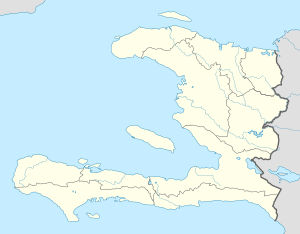Eleutherodactylus rhodesi facts for kids
Quick facts for kids Eleutherodactylus rhodesi |
|
|---|---|
| Conservation status | |
| Scientific classification | |
| Genus: |
Eleutherodactylus
|
| Species: |
rhodesi
|
| Synonyms | |
|
Euhyas rhodesi (Schwartz, 1980) |
|
The Rhodes' robber frog (scientific name: Eleutherodactylus rhodesi) is a type of frog that belongs to the Eleutherodactylidae family. This special frog lives only in Haiti. It has only been found in one specific area near Port-de-Paix, which is in the Nord-Ouest department of Haiti. When a species lives only in one place, it is called endemic.
Contents
Why is it Called Rhodes' Robber Frog?
The second part of the frog's scientific name, rhodesi, was chosen to honor S. Craig Rhodes. He was a friend of Albert Schwartz, a scientist who discovered this frog. They were exploring and collecting animals together near Port-de-Paix when they found this species.
What Does the Rhodes' Robber Frog Look Like?
Scientists have studied several Rhodes' robber frogs. Young frogs (called juveniles) were found to be about 12 to 20 millimeters long. Adult male frogs were around 26 millimeters long. Adult female frogs were a bit larger, measuring about 23 to 30 millimeters from their snout to their rear end.
This frog has a flat-looking snout. You can see its tympanum, which is like an eardrum. Its fingers and toes do not have any webbing, and they don't have special sticky pads (discs) like some other frogs. The frog's skin is smooth.
The top of its body is an olive green color. It has dark gray or black patterns on top. The parts of its body that are usually hidden, like its belly, are pale gray with black stripes. The frog's iris (the colored part of its eye) is bronze on the top and reddish-brown on the bottom.
Where Do These Frogs Live?
Rhodes' robber frogs have been found living in forests. They like to hide in leaf litter on the ground or under rocks. They usually live at low elevations, about 30 meters (around 100 feet) above sea level. Many of the first frogs found were hiding under trash in a damp area where banana plants were growing.

Protecting the Rhodes' Robber Frog
Even though this frog can be found in good numbers where it lives, its home area is very small. The biggest danger to the Rhodes' robber frog is habitat loss. This happens when forests are cut down for wood (logging) or cleared to make space for farms (agriculture). Protecting their forest homes is very important for these unique frogs.


